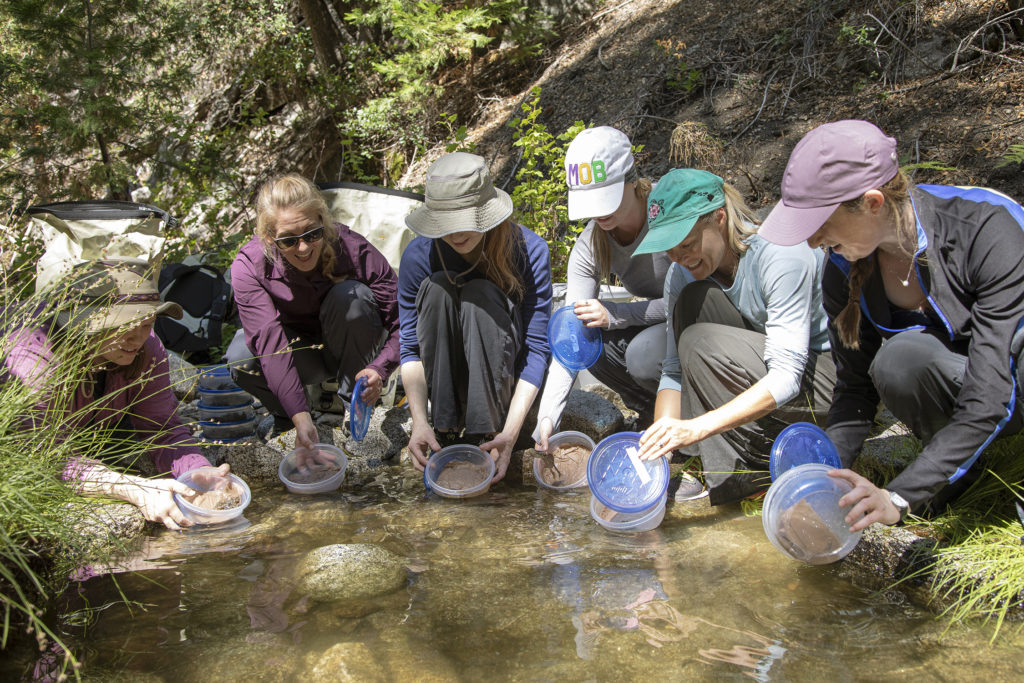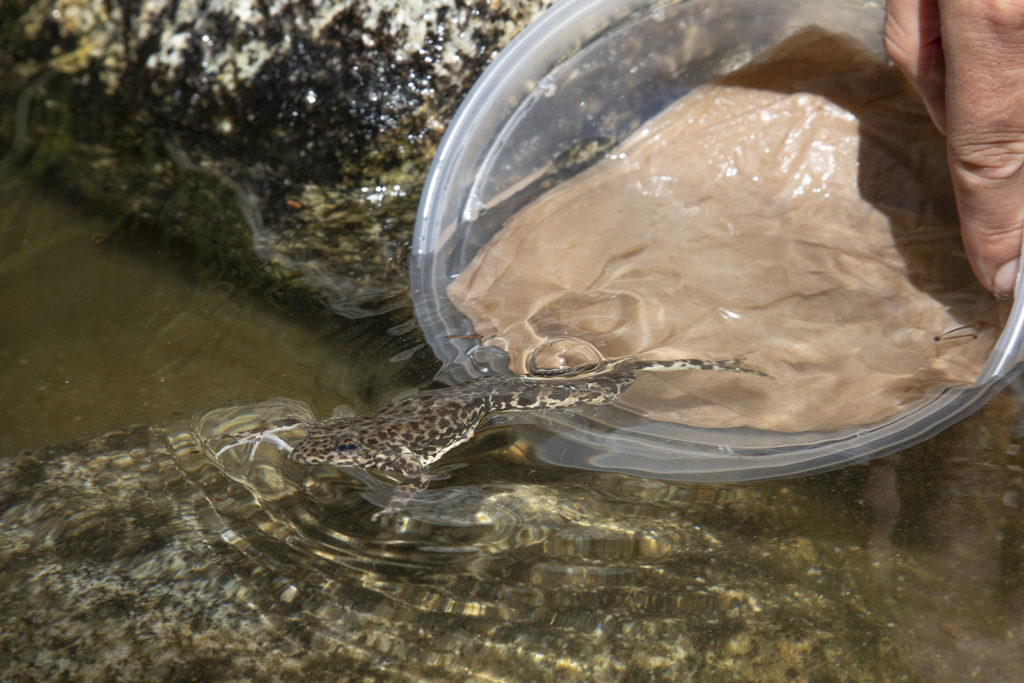
San Diego Zoo Global has achieved a major conservation milestone this month, releasing more than 260 endangered mountain yellow-legged frog adults and froglets and more than 680 tadpoles into the San Bernardino and San Jacinto Mountains. Working with U.S. Geological Survey (USGS) and other partners, the research team implanted radio-telemetry transmitters into a group of the adult frogs, which are expected to enter hibernation in the fall. This will be the first time transmitters have ever been used to track these frog populations during their annual hibernation cycle.
Researchers said the data they collect from the trackers will provide them with much-needed information, such as how the frogs use their habitat, and the locations they choose as hibernation sites, which are currently unknown.

“This is an exciting moment and a step forward for mountain yellow-legged frog conservation,” said Debra Shier, associate director for the Conservation Research Division the San Diego Zoo Institute for Conservation Research. “The radio-telemetry transmitters we’re using will last over six months and allow us to reliably locate reintroduced frogs. The information will help us better understand their habitat requirements and inform how we select future release sites.”
This month’s reintroduction is part of an overall breeding program started by San Diego Zoo Global in partnership with the U.S. Fish and Wildlife Service, USGS, the California Department of Fish and Wildlife, United States Forest Service, and other zoological institutions, including the Omaha’s Henry Doorly Zoo and the Los Angeles Zoo. The program, now in its 14th year, began when scientists from USGS rescued 80 tadpoles from a drying creek bed in the San Jacinto Mountains and brought them to the San Diego Zoo Institute for Conservation Research. Since then, thousands of frogs have been bred and released back into the region, with 950 individuals released this year.

Estimates indicate that about 41 percent of amphibian species are at risk of extinction, making them the world’s most threatened vertebrate group. Over the past 40 years, the mountain yellow-legged frog population steadily declined due to multiple factors, including habitat loss, drought, introduced predators (trout), pollution and the deadly amphibian disease chytridiomycosis, caused by the chytrid fungus. The frog population numbers fell so dramatically that the species was listed as “Endangered” under the Endangered Species Act and on the International Union for Conservation of Nature (IUCN) Red List of Threatened Species. One population in the San Bernardino Mountains was at critically low levels at the time of listing, and only one known wild frog remains.
However, as the breeding program’s success continues to grow, researchers have begun “headstarting” tadpoles into their native ranges, with a plan to continue reintroducing individuals for the foreseeable future.




